Welcome to On Verticality. This blog explores the innate human need to escape the surface of the earth, and our struggles to do so throughout history. If you’re new here, a good place to start is the Theory of Verticality section or the Introduction to Verticality. If you want to receive updates on what’s new with the blog, you can use the Subscribe page to sign up. Thanks for visiting!
Click to filter posts by the three main subjects for the blog : Architecture, Flight and Mountains.
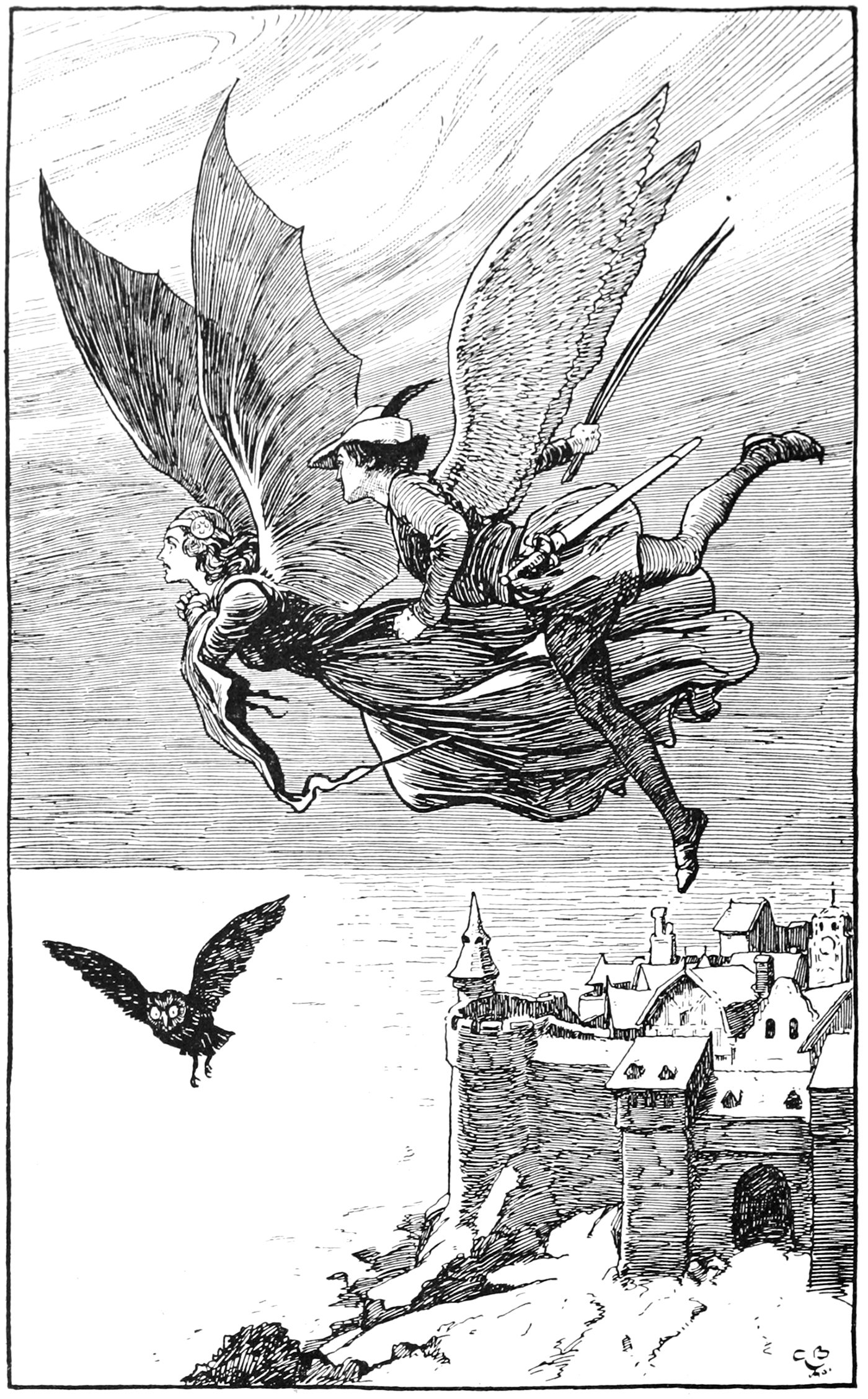
The Traveling Companion
The Traveling Companion is a fairy tale written by Hans Christian Andersen in 1835. It follows the travels of a man named John, and how he comes to marry a princess. Along the way, he meets a traveling companion who helps him in various situations, and one of his defining features is his ability to fly.
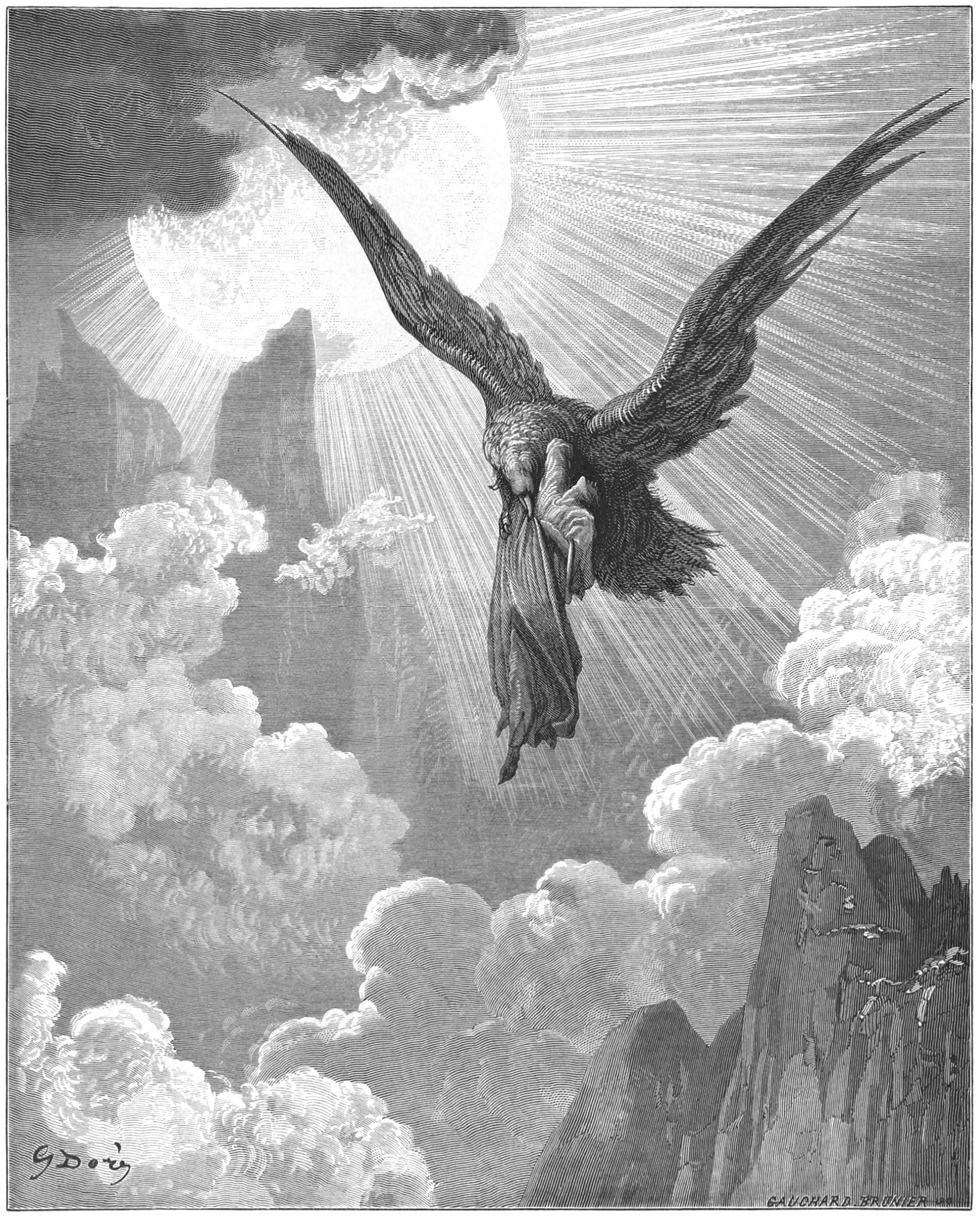
Dante and the Eagle
Pictured above is an illustration by Gustave Doré showing a scene from Dante’s Purgatorio. The scene takes place in Canto IX, as Dante is carried by an Eagle to the entry point of Purgatory. As I’ve previously written, the entire structure of Dante’s Divine Comedy is rooted in verticality, and this scene is just one example of this. Purgatory is a mountain which Dante must ascend in order to reach Paradise, or heaven.
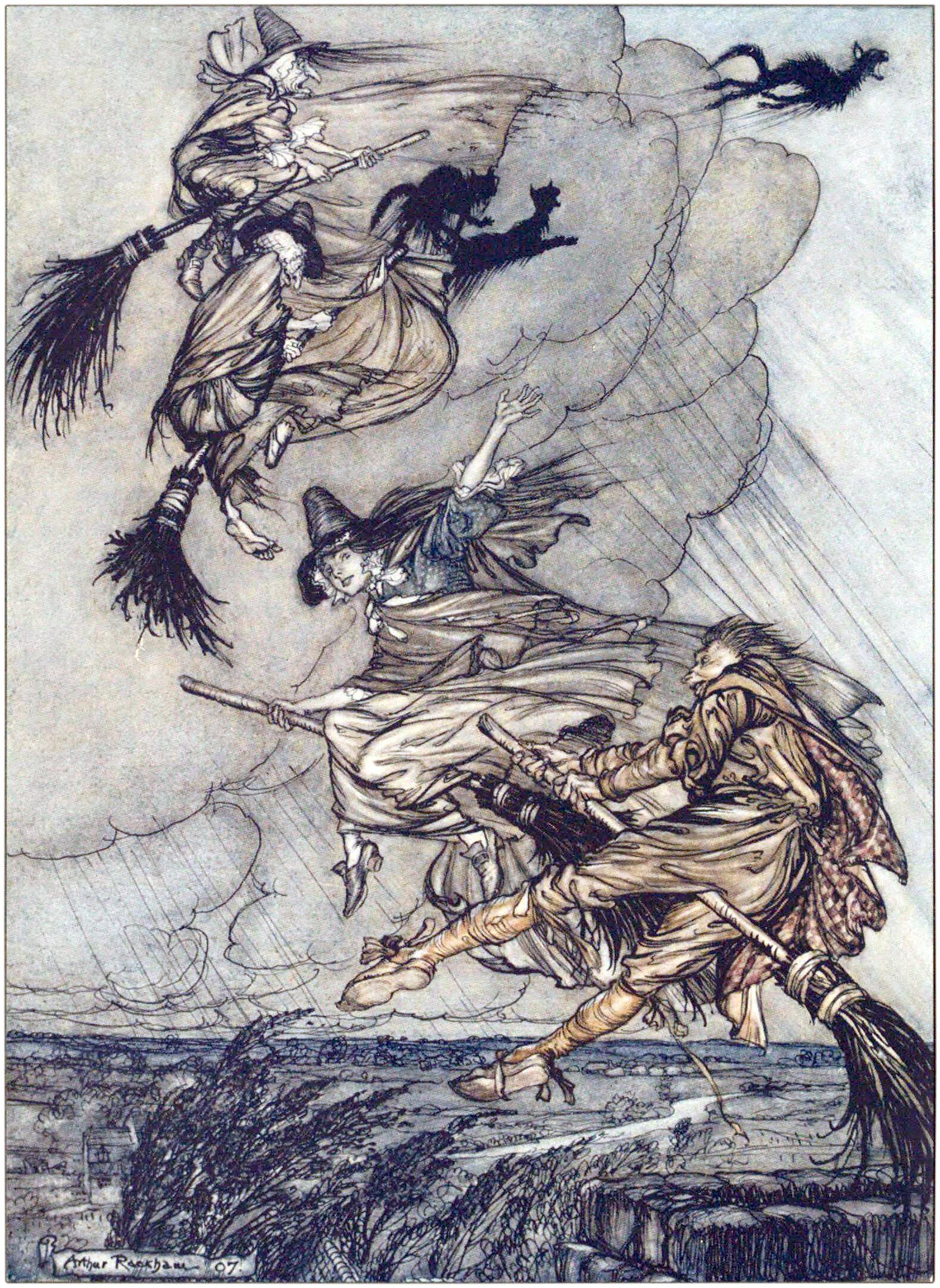
The Witches’ Frolic
Pictured above is an illustration by Arthur Rackham showing a scene from the Thomas Ingoldsby legend The Witches’ Frolic. The story follows a young man Robin as he interacts with a group of witches, and verticality is featured throughout the tale.
“Mountaineering offers an emotional experience which cannot otherwise be reached.”
-George Mallory, English Mountaineer, 1886-1924.
“I have found beauty … I have soared, like a bird. Oh, I cannot say how beautiful it is up there, in the sky, with the wind about me, blowing me like a feather.”
-Written by Ray Bradbury, American author, 1920-2012.

The Fool of the World and the Flying Ship
Flight is used in myriad folk tales to symbolize power. This is typically done to aid a character who is either downtrodden or has done a good deed without a promise of reward. The Russian folk tale The Fool of the World and the Flying Ship follows this pattern. It’s the story of a young fool who ends up marrying a princess because of a series of fortunate events, combined with his good-natured approach to others.
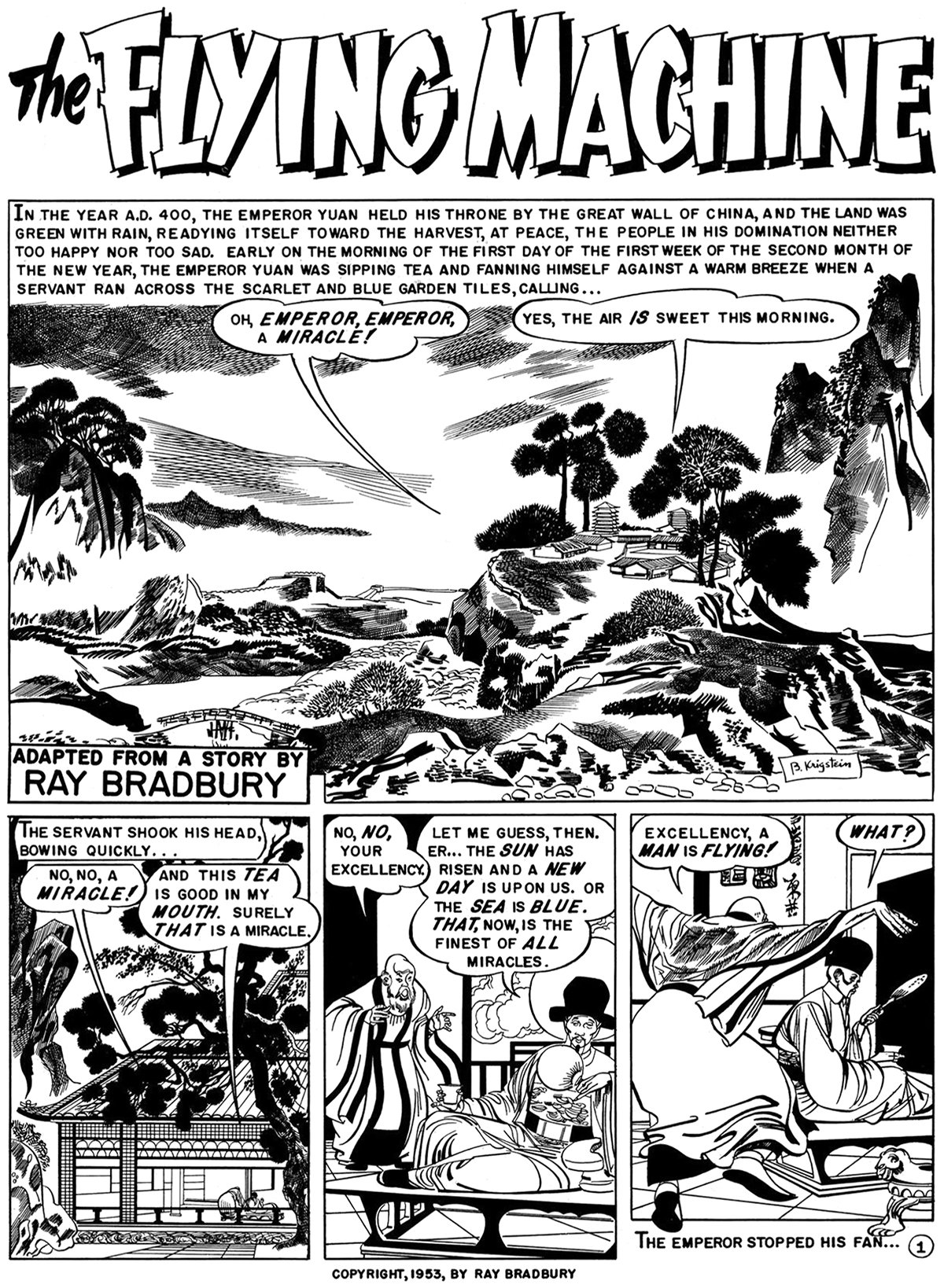
The Flying Machine by Ray Bradbury
With great power comes great responsibility. This is the major theme of Ray Bradbury’s short story from 1953, titled The Flying Machine. It was adapted into a comic in 1954 by Al Feldstein, and the full piece is pictured here. It tells the story of a meeting between an emperor and an inventor who has built a flying machine. The inventor is an optimist who experiences the full delights of flying, while the emperor is a pessimist who fears the technology will fall into the wrong hands. It’s a theme that runs much deeper than human flight, but Bradbury’s choice to feature the flying machine demonstrates the power of flight for humanity.
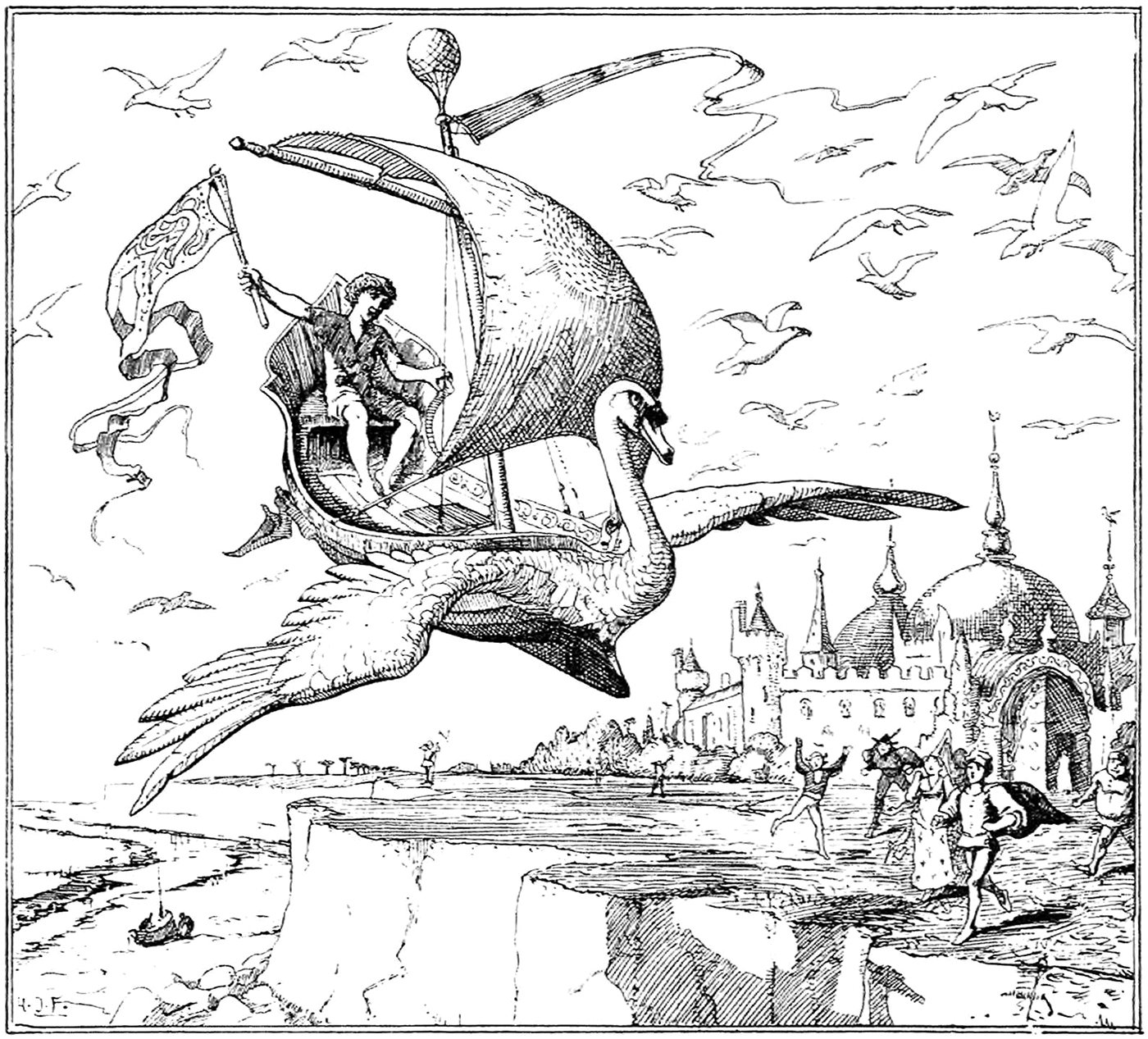
Minnikin’s Flying Ship
‘Now go over fresh water and salt water, over hill and dale, and do not stop until thou comest to where the King’s daughter is,’ said Minnikin to the ship, and off it went in a moment over land and water till the wind whistled and moaned all round about it.
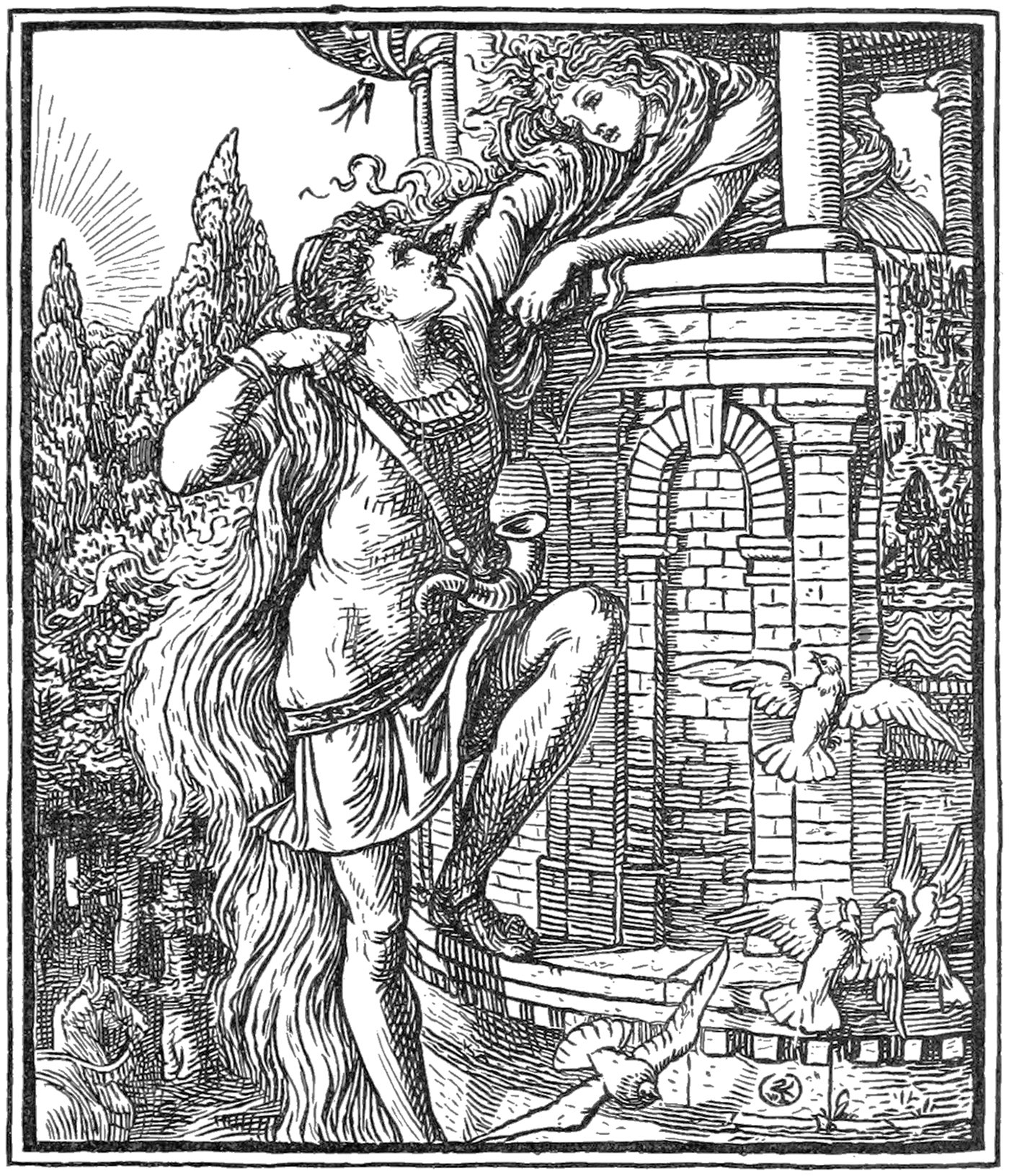
Rapunzel and the Isolation of Height
The story of Rapunzel and her long hair is a well-known folk tale with ancient origins. It’s the story of a damsel-in-distress and a prince who comes to rescue her. It’s well-worn territory in the world of folk tales, but the specifics of the story reveal a subtext that’s based on verticality.
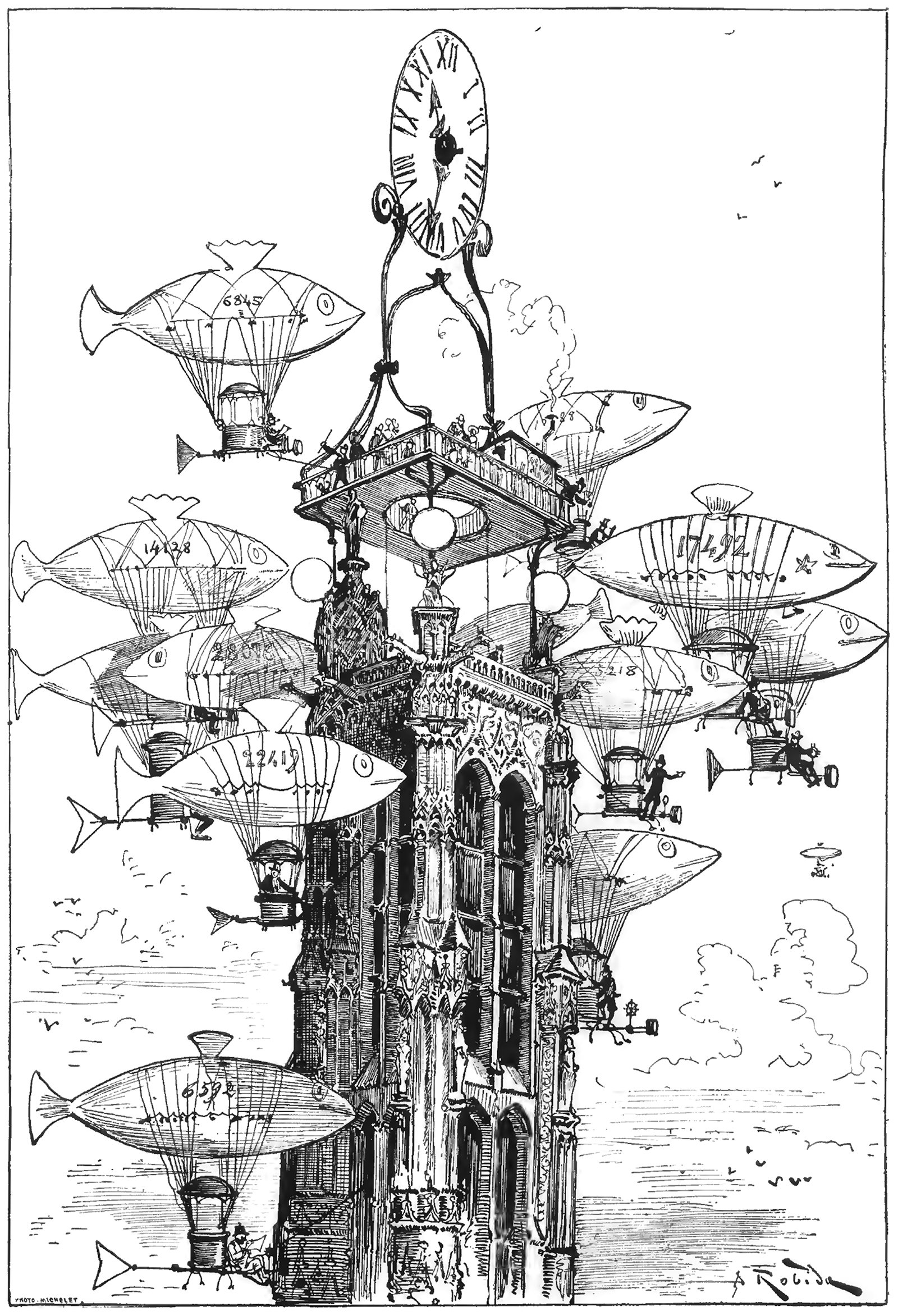
An Aerocab Station atop the Tour Saint-Jacques
The above illustration was drawn by Albert Robida for his 1883 novel Le Vingtième Siècle, or The Twentieth Century. This illustration was titled La Station d'Aerocabs de la Tour Saint-Jacques, or The Aerocab Station of the Tour Saint-Jacques, and it shows a raised platform and clock atop the iconic Parisian structure. Flocking around the tower is a group of dirigibles made to look like fish. What’s charming about the image is how the cluster of dirigibles resemble a school of fish, almost crowding out the tower itself from the image.
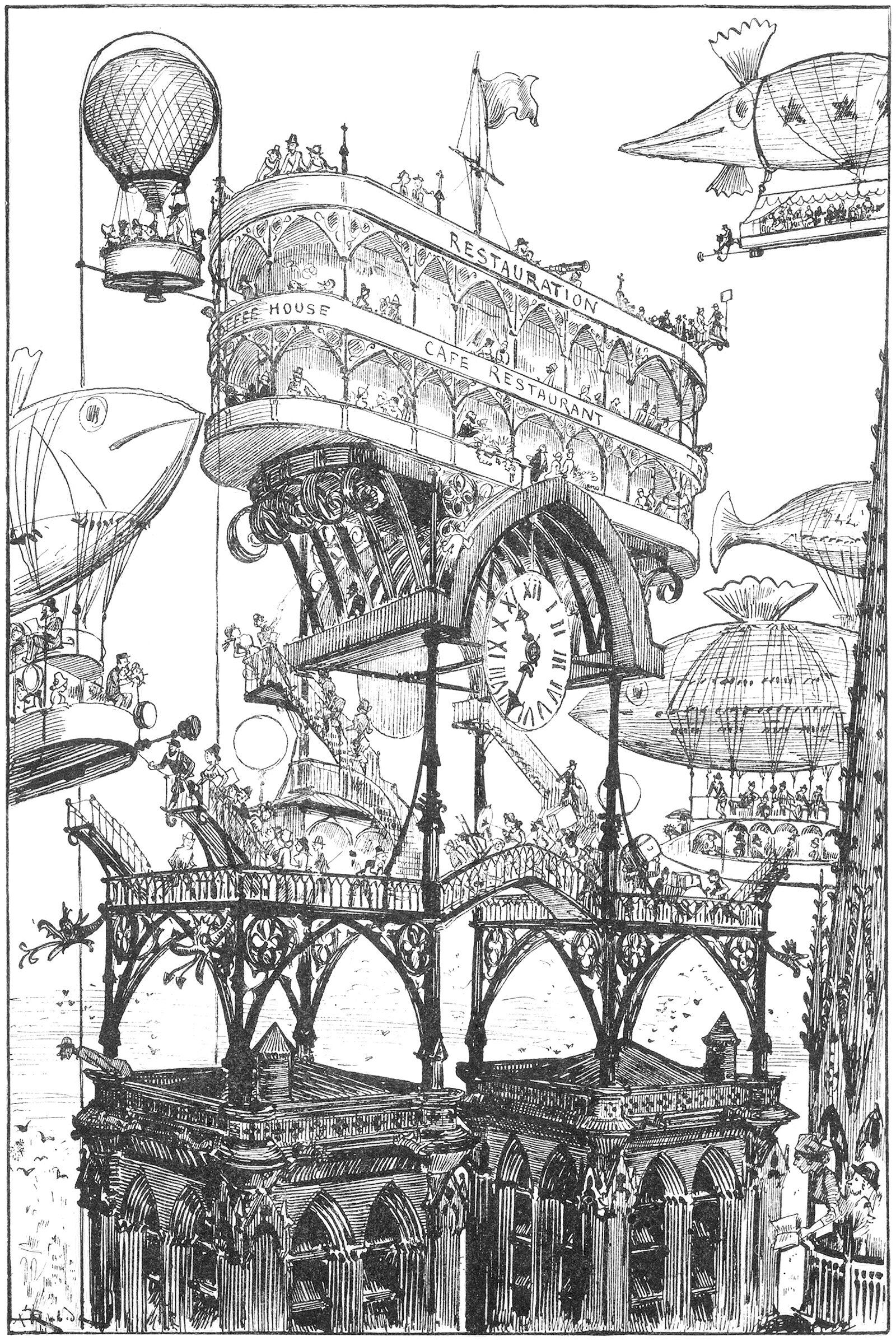
An Airport on top of Notre Dame
The above illustration was drawn by Albert Robida for his 1883 novel Le Vingtième Siècle, or The Twentieth Century. The novel describes a future vision for Paris in the 1950’s, focusing on technological advancements and how they would affect the daily lives of Parisians. Here he shows an elaborate transit station built on top of the bell towers of the Notre Dame Cathedral. It’s a wonderfully ambitious idea, and it represents modernity overtaking history.
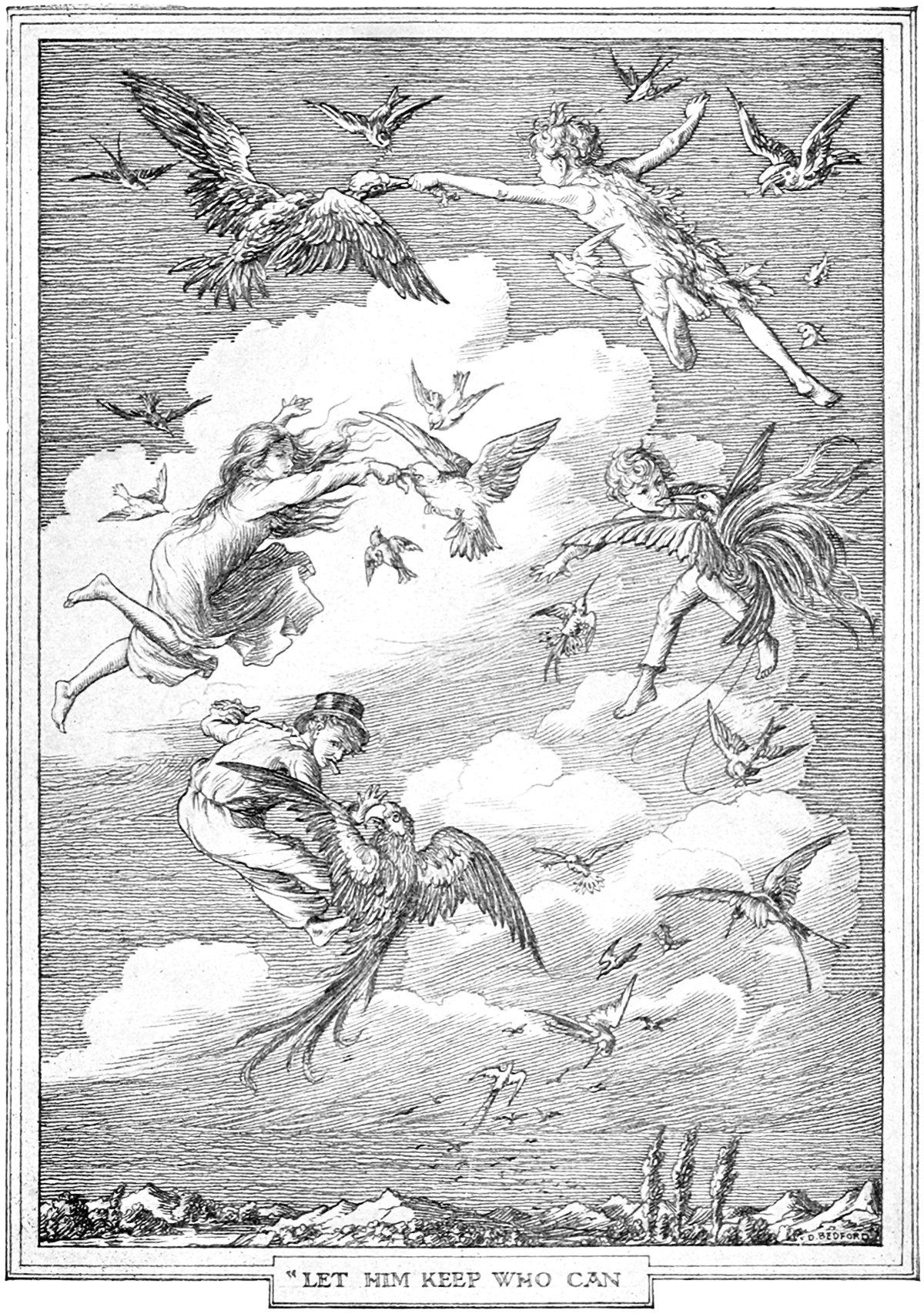
Peter Pan and the Delights of Flying
Peter Pan is perhaps best known from the animated 1953 film Peter Pan, but his story originated in the book Peter and Wendy, written in 1911 by J. M. Barrie. It’s a story of fairies, mermaids, pirates, and a mischievous boy with the power of flight. This boy, named Peter Pan, has adventures in Neverland with a group of British children that he teaches to fly. Flight is central to the narrative of the story, and Barrie does a good job of describing the children’s joy as they learn to fly.

Jules Verne’s Clipper of the Clouds
Fiction has a way of reflecting and informing reality. Pictured above is an illustration from Jules Verne’s novel Robur the Conqueror, published in 1886. It shows a fictional flying machine called the Clipper of the Clouds, which was built by the novel’s titular character. Throughout the story, Verne explores the nature of flight, its effects on humanity, and the general sense of public awe in the early days of flying machines. There’s also an undertone of the God versus Ego struggle that is central to the verticality narrative.
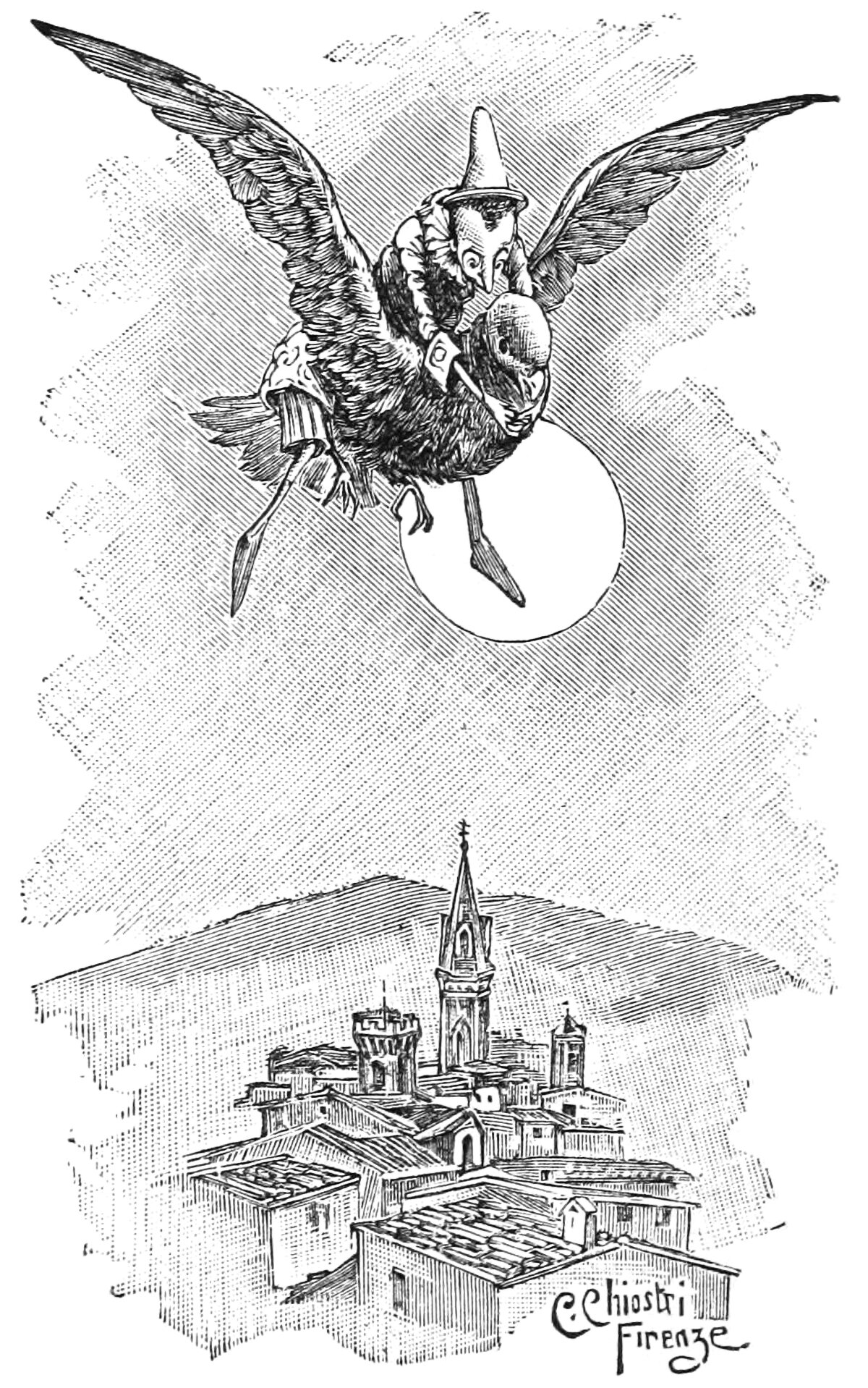
Pinocchio’s Feathered Steed
Folklore and fantasy are full of references to the power of flight. These references usually take one of two different forms. The first are characters who can actually fly, and the second are characters who fly by means of another creature. Examples of the first are fairies, angels, cherubs, and seraphs, among many others. The illustration above shows an example of the second. It’s from Carlo Collodi’s 1883 children’s book The Adventures of Pinocchio, when the titular character hitches a ride on the back of a giant pigeon.
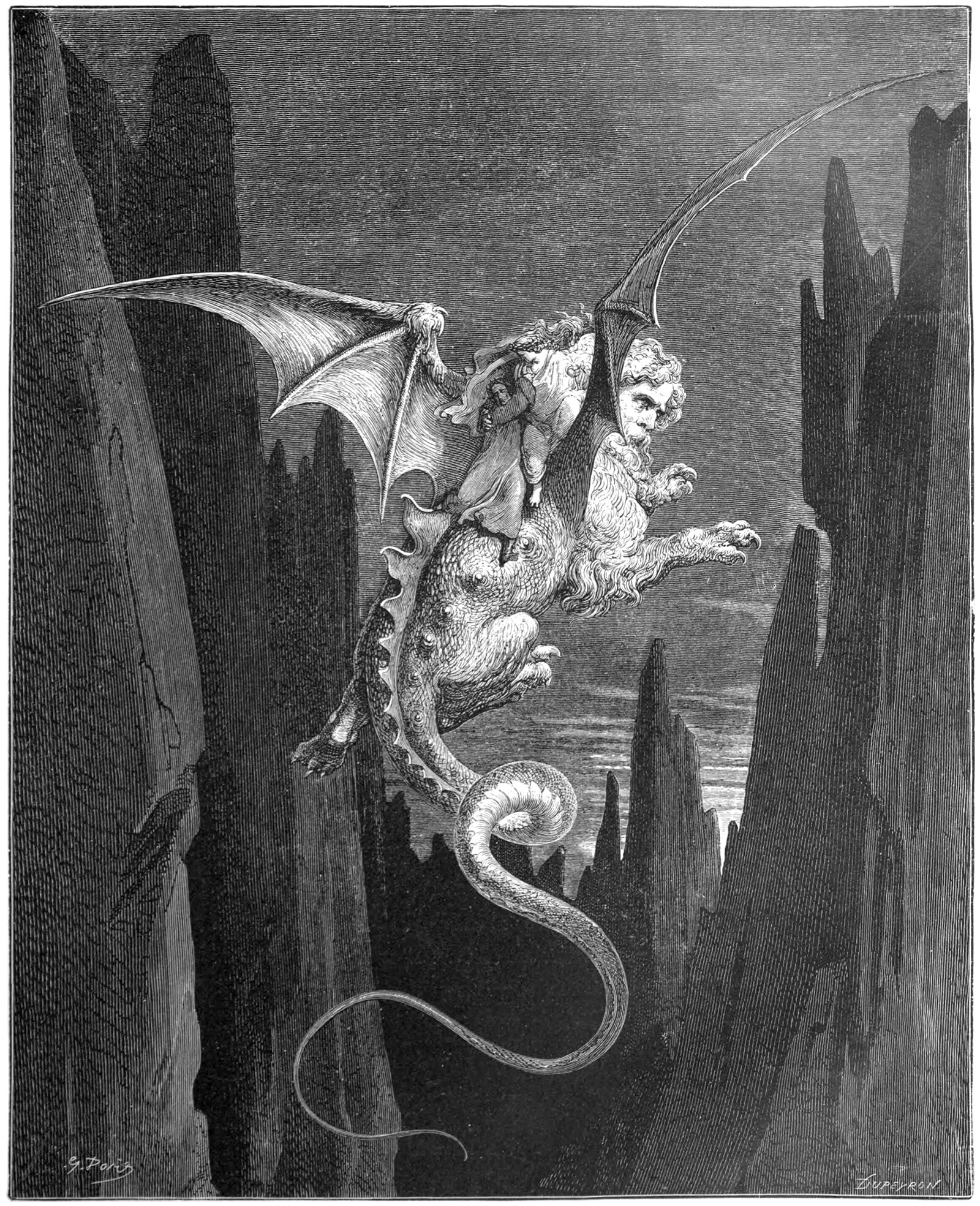
The Flight of Geryon
The above illustration by Gustave Doré shows a scene from Dante’s Divine Comedy. The epic poem follows Dante and Virgil as they pass through Inferno, Purgatorio and Paradiso, and it deals with the concepts of Heaven and Hell, as well as the Seven Deadly Sins. This scene is from Canto XXVII of Inferno, when Dante and Virgil mount the back of the great beast Geryon and fly down from the seventh to the eighth circle of hell.
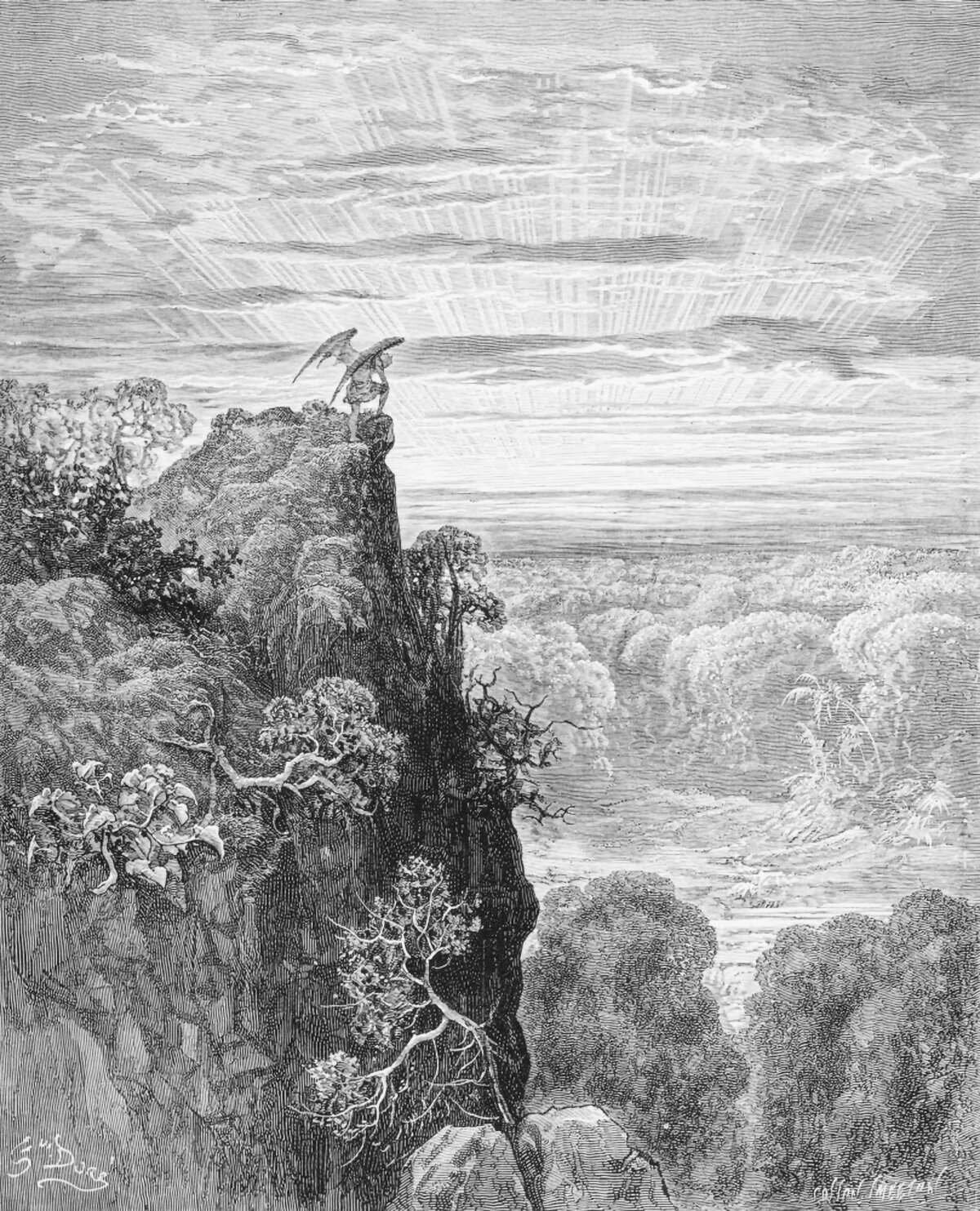
Satan Overlooking Paradise by Gustave Doré
This is an illustration by Gustave Doré for John Milton’s epic poem Paradise Lost. The poem deals with the biblical narrative of original sin, and the first half of the story focuses on Satan and his fall from heaven. In this part of the story, Satan is standing on a mountaintop, overlooking the earthly paradise and considering his plan to corrupt Adam and Eve. Milton is using verticality to enhance the drama of the moment, and by placing Satan in such a high place it allows him to examine his motivations more clearly.
“O human race, born to fly upward, wherefore at a little wind dost thou so fall?”
-From The Divine Comedy, by Dante Alighieri, Italian poet and philosopher, 1265-1321.

Flying Carpets and the Power of Flight
Flying carpets are the things of folk tales and fantasy. They are magical objects with the power of flight, and anyone who owns one has considerable power over those who don’t. They can quickly transport their owners across the land at great speeds, and they allow their owners to achieve verticality. Here’s a look at the folk tales that established the myth of the flying carpet.
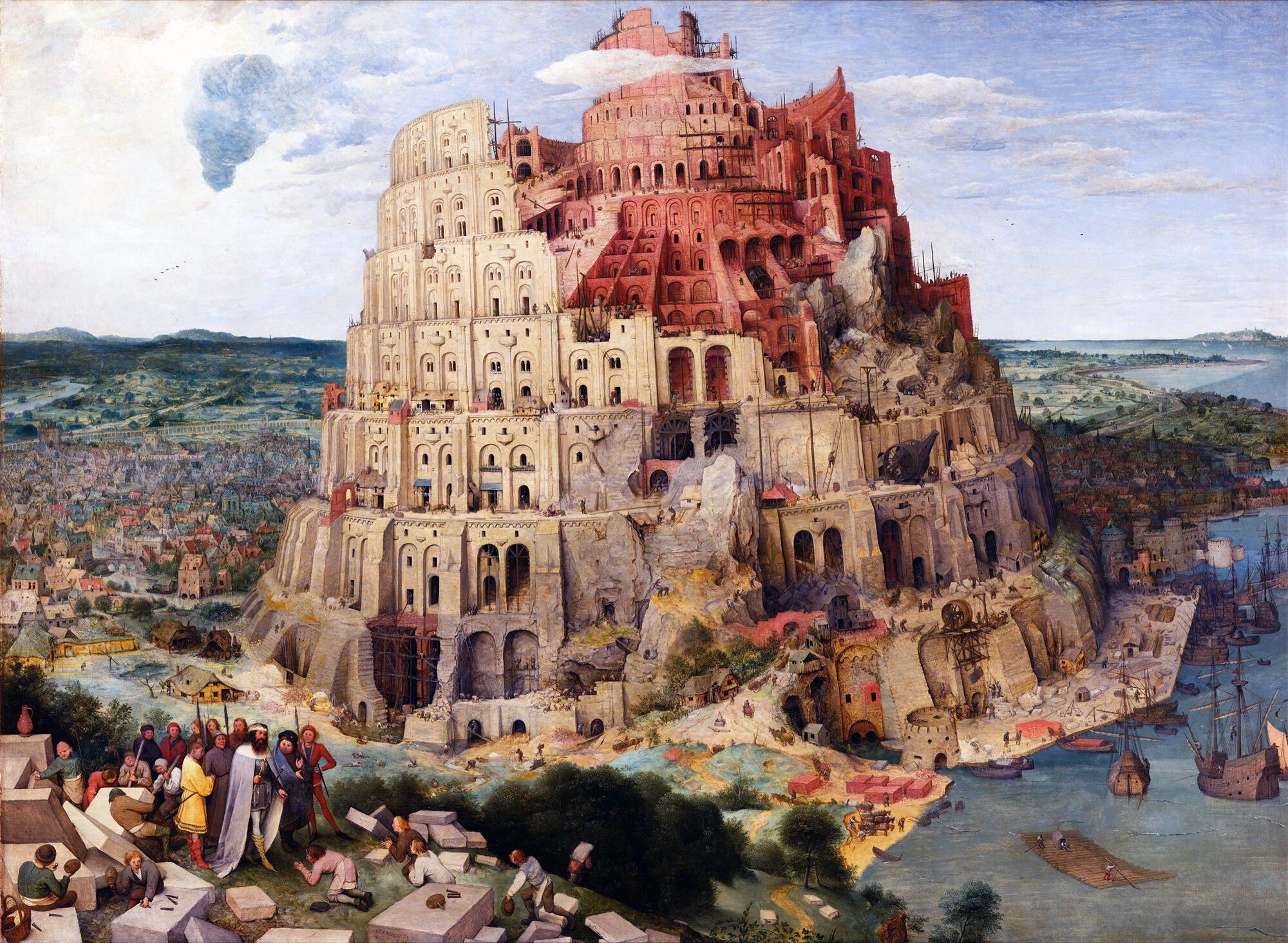
The Tower of Babel : A Parable of Verticality
The Tower of Babel is arguably the most storied myth about the human need for Verticality that has survived from antiquity. It’s a legendary tale of a clash between Ego and God, and it acts as a starting point for any worthwhile history of human towers or skyscrapers. Let’s take a look at why it’s been so influential, and why it encapsulates our struggles with Verticality.
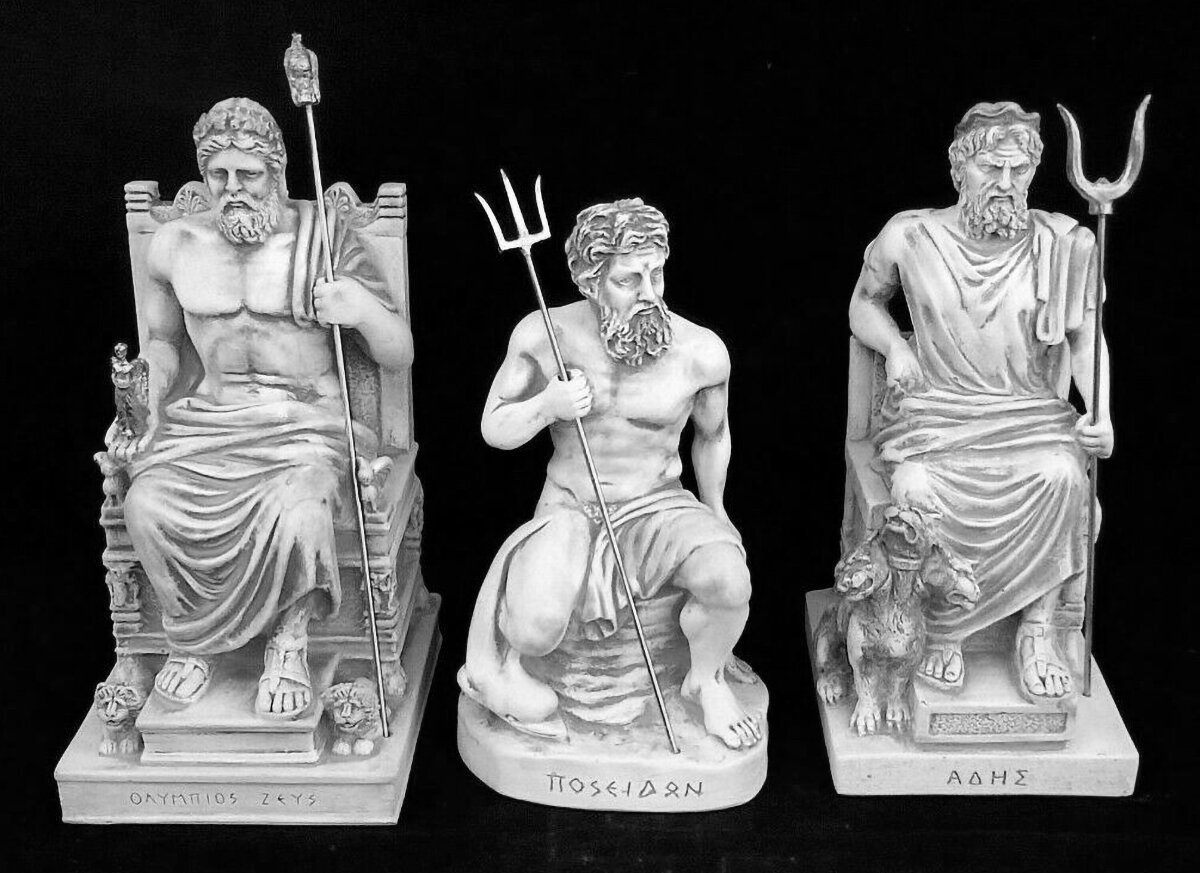
Zeus, Poseidon and Hades : The Verticality of the Greek Gods
Nearly all ancient belief systems are based on the surface, the underground, and the sky in some way. These three concepts represent something primal for humans, and throughout history we’ve attached myriad meanings and stories to the relationship between them. Typically, they’re either represented by an abstract concept or a god. An example of the former is the Christian idea of heaven and hell. An example of the latter is the Ancient Greek gods Zeus and Hades.
